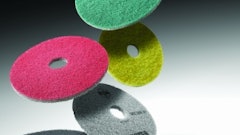
In 2014, the ice bucket challenge took social media by storm. The craze, which involved people filming themselves while pouring buckets of ice-cold water over their heads, was a bid to raise awareness of neurological disease, Amyotrophic Lateral Sclerosis (ALS). One illness that is still fairly unknown among the general public, but affects up to 7,300 US construction workers every year is silicosis, a respiratory condition caused by the inhalation of silica dust.
Silicon dioxide or silica is a chemical compound found in materials that are used regularly in the construction industry, including sandstone, granite, brick and concrete. In the workplace, these materials create dust when they are cut, sanded and carved. When fine enough, this dust can be inhaled by construction workers, causing health problems, such as silicosis or bronchitis.
The quantity of silica contained in most materials can be estimated within 20%. Sandstone has silica content between 70 and 90% and there is between 30 and 45% silicon dioxide in tile. However, in concrete, the silica content can be anywhere between 25 and 70%, so it is difficult to estimate what protection measures are necessary for each job.
Using the correct dust collecting equipment is the easiest way to mitigate the dangers of silica dust. From grinding concrete to surface polishing, construction workers need to be aware that they will be creating silica dust, even if the particles are too small for the naked eye to see. Investing in a dust collector that attaches onto surface preparation equipment is the best way to keep silica dust enclosed and stop it from becoming airborne.
Vacuums and dust collectors with a one-filter system aren't thorough enough to gather the finer particles that can pass through the respiratory system and cause health problems. When there is a risk of silica dust inhalation, look for a dust collector with an individually tested High-Efficiency Particulate Air (HEPA) filter and a high minimum efficiency. National Flooring Equipment's range of dust collectors boasts a 99.995% minimum efficiency rating at 0.14 microns.
The vacuum's bagging system is also an extremely important component. If the silica dust becomes airborne when the user changes the vacuum bag, the work that the filters have done previously is wasted. Most top of the range dust collectors will come equipped with a continuous bag, which can be cut from the machine and disposed of without being unsealed.
In the United States, the Occupational Safety and Health Administration (OSHA) has taken matters into its own hands by limiting construction workers' exposure to silica. Over an eight-hour shift, workers cannot be exposed to more than 50 micrograms per cubic meter of air. This standard was passed on June 23, 2016 and construction companies in the US have one year to comply with the requirements.
Contractors, original equipment manufacturers and trade bodies have to coordinate their efforts to mitigate the risks of silica dust by raising awareness about the dangers of breathing in small particles and by promoting best practice when working in environments with high silicone dioxide content. Fun as it may be, an ice bucket challenge might not be the best way to spread awareness of the dangers of silica dust exposure. Instead, the industry needs to make workers aware of these dangers and use professional dust collectors correctly at all times.



























